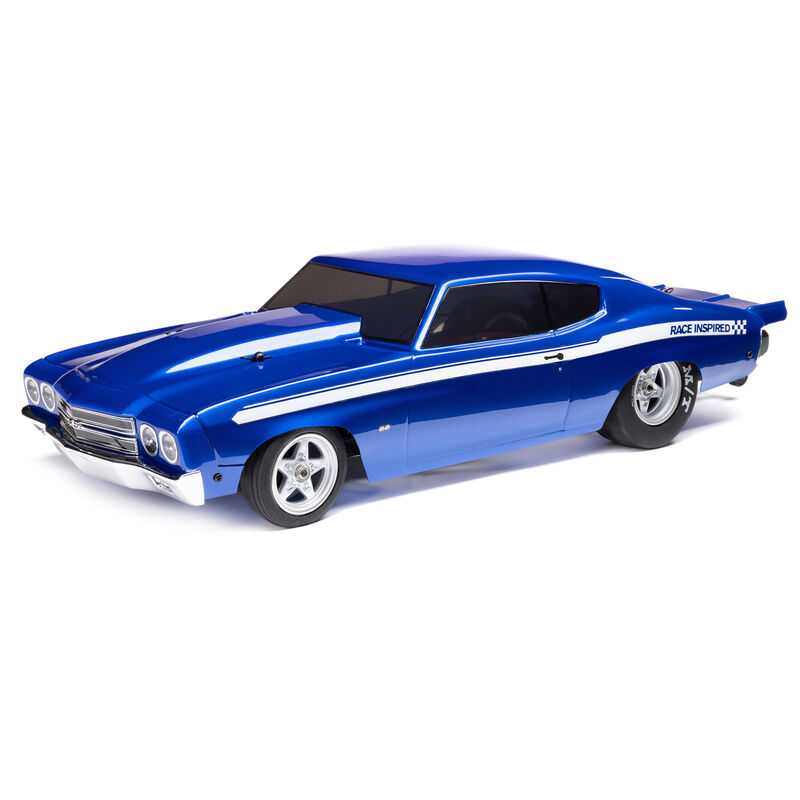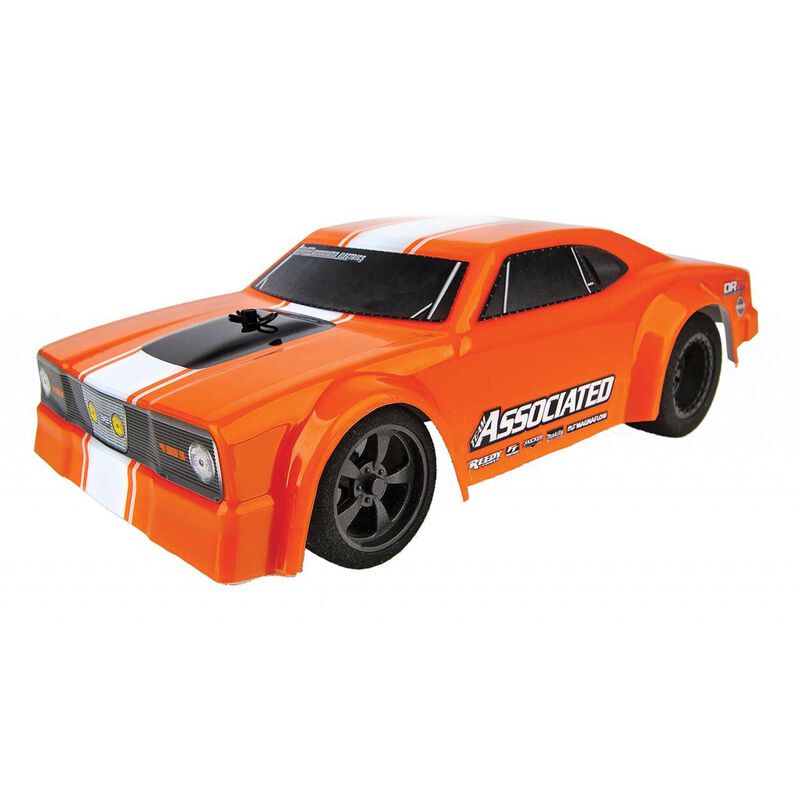Posted: 10/16/24
How to Get Started in RC Drag Racing and What Makes a Good RC Drag Car
You can have fun with remote control cars and trucks in many different ways. Some RC car hobbyists get their biggest kicks just from going into the backyard and bashing — charging over rough terrain, leaping off of ramps, and testing the limits on what their radio control models can do.
Get two or more RC car enthusiasts together with their vehicles, however, and it’s almost inevitable that they’ll want to prove whose car is the fastest. No question about it, RC car racing is a blast. And one of the most exciting ways to compete can also be one of the simplest. That’s RC drag racing!
What is RC drag racing?
The image many hobbyists have of RC car racing is a half-dozen or more drivers sending their remote control cars barreling around a track for multiple laps. They make their RC cars leap over jumps and slide through corners, raising a rooster tail of dust behind them. Like full-scale stock car or Formula One racers, these RC race drivers adjust their speed and steering to jockey for the lead position in the pack, everyone hoping to finish first.
Racing RC drag cars is nothing like that, of course, but it’s every bit as much fun. RC drag racing is a lot simpler and open to the everyday hobbyist. To race RC drag cars, you don’t need access to an elaborate track that’s stretched over a wide area. You don’t need a large group of participating RC drivers to race, either. Organized RC drag racing events are available, but at its most basic, RC drag racing is just two RC drag car drivers sending their vehicles down a straight length of flat road to see who can get to the finish ahead of the other.
How does RC drag racing work?
The concept behind RC drag racing is very much the same as full-scale drag racing. Two RC drag cars line up side-by-side at the starting line of a flat, straight track. At the “Go!” signal they race as quickly as they can to the finish line, in as straight a line as possible. The one who gets there first is the winner.
A fast-growing segment of RC car racing called No Prep RC Drag Racing shows how RC drag racing can easily be made into an organized competition with many more than just two participants. You’ll find the No Prep RC Drag Racing rules here.
The races are divided into elimination rounds that give each participating RC drag car driver a 50-50 chance of advancing. If you win your round, you go on to the next one. If you lose…well, there’s still plenty of fun to be had watching the other drivers battle to be the last one standing.
Finding a suitable location for No Prep RC Drag Racing is pretty easy. The races can take place on any flat surface that simulates normal street conditions and allows for a 132-foot long drag strip. Large parking lots after hours or the paved space behind a warehouse will work. Special surface preparations to increase traction are forbidden. Any group of RC drag car owners who want to meet and compete can put together a No Prep RC Drag Racing event without much fuss.
Ready-to-run RC drag cars are available that have been designed just for this type of competition. Check out the Losi 1/16 scale 1970 Chevy Chevelle mini RC drag car. In addition to offering classic scale drag car looks, RTR RC drag cars are engineered right out of the box to deliver competitive performance and meet the regulations for No Prep RC Drag Racing. See more RC drag cars that are ready to race here.
Typically, every driver at an RC drag race is there mostly just to make friends and have a great time. The competition gets serious for the three seconds it takes to race 132 feet. Then, everyone is smiling again and rooting for each other to win!
How can I take part in RC drag racing?
RC drag racing doesn’t have to follow strict regulations. You can use the rules of No Prep RC Drag Racing as guidelines and modify them however needed to create fun events with your friends. But if you’re interested in a more structured type of competition, get in touch with your local hobby shop. Many RC hobby retailers hold RC drag racing events for their customers, or will at least know if there are such events nearby that you can enter.
Sometimes you can even win trophies and cash prizes in RC drag racing. At the annual King of the Streets No Prep Street Outlaw RC Drag Racing event in Las Vegas, everyone who enters pays a $100 fee — which isn’t cheap, but does lead to the winner taking home a crowd-funded purse that amounts to thousands of dollars! You can read all about the King of the Streets here.
If you’re a newcomer to RC drag cars and just starting to race, be sure to practice making quick starts and driving your RC drag car in as straight a line as possible. That’s what it takes to be successful in RC drag racing. As you get more runs under your belt, your reaction time to the starting signal will improve. Good reaction time can make the winning difference between cars and drivers that are otherwise equally matched.
What makes a good RC drag car?
The best RC drag cars are on-road vehicles designed specifically to go very fast over short distances in as straight a line as possible with a fast start off the line. You can find a good selection of RC drag cars here, including some very popular Losi RC drag cars. Most of the RC drag cars that are made for competition can reach speeds of about 60 to 70 mph. If the RC drag car has been modified, it’s entirely possible that it could top 100 mph!
Usually, only 2WD RC drag cars are allowed in RC drag racing. Driving assistance technology like Spektrum AVC® is also prohibited. That’s because steering skills are an important part of the race. Anyone using electronic course-correcting technology to help them drive straight would have an unfair advantage and take the fun out of the competition.
RC drag cars used for No Prep RC Drag Racing are inspected before each run. They must weigh at least 4.54 pounds and the battery voltage cannot exceed 8.44V on a 2-cell LiPo. Vehicles that fail the inspection are removed from the race. You can use any RC car motor commonly available over-the-counter. Your choice of RC drag car tire compound makes a difference, too. With experience, you’ll know which RC tire compounds get the best traction on a variety of drag strip conditions and be able to shave precious seconds off of your times.
If you want to race RC cars, one of the easiest and most realistic ways to do it is with RC drag cars. RC drag racing is an absolute blast! Get together with a friend, set up a strip, and prove who can get their RC drag car to the finish line first.








